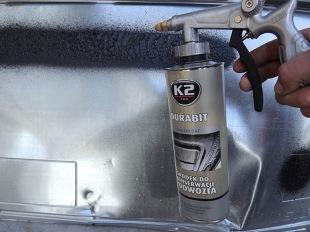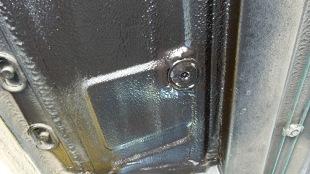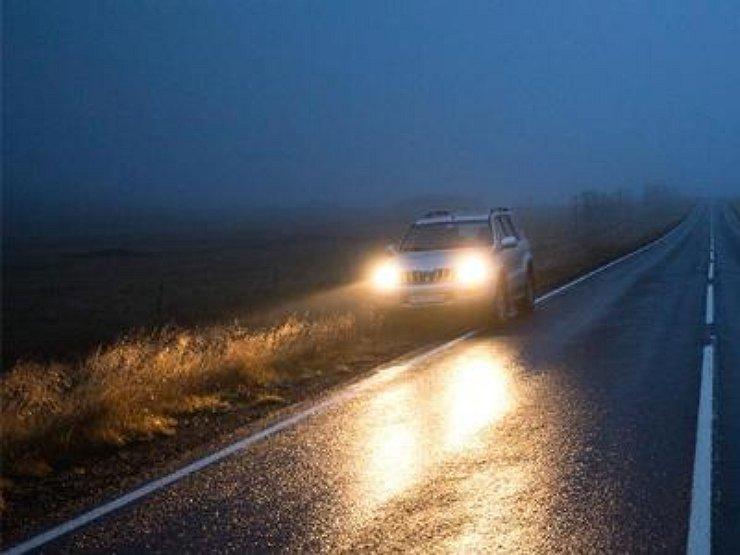
Don't get corroded
 In winter, thousands of tons of salt appear on Polish roads. Poland is one of the few countries in the European Union where such a large amount of sodium chloride is spilled on the roads. Unfortunately, road salt can be a nuisance to a car. It is thanks to him that the car body, chassis components and transmission systems rust. To prevent the harmful effects of this industrial product, you need to know just a few ways to protect your car from corrosion.
In winter, thousands of tons of salt appear on Polish roads. Poland is one of the few countries in the European Union where such a large amount of sodium chloride is spilled on the roads. Unfortunately, road salt can be a nuisance to a car. It is thanks to him that the car body, chassis components and transmission systems rust. To prevent the harmful effects of this industrial product, you need to know just a few ways to protect your car from corrosion.
Most of the cars bought in Poland are used cars. Imported from abroad, they are often copies  after accidents, which are brought to a state suitable for operation, they pass into the hands of new owners. Repairs aimed at restoring the original strength and durability of the body are very expensive, which is why many refurbished cars have the cheapest cost. Therefore, cars bought on the market are not sufficiently protected against corrosion.
after accidents, which are brought to a state suitable for operation, they pass into the hands of new owners. Repairs aimed at restoring the original strength and durability of the body are very expensive, which is why many refurbished cars have the cheapest cost. Therefore, cars bought on the market are not sufficiently protected against corrosion.
It shouldn't be better with new cars. Although they are made of galvanized sheet and protected from corrosion, the factory protective layer does not provide reliable protection, as it is sometimes sloppy. During the warranty period, the risk of corrosion is low, but increases rapidly after a few years of vehicle operation. In some cars, even despite the terms of a long warranty, corrosion may appear after 2-3 years. Even in a relatively “young” car, it is worth periodically inspecting the elements most susceptible to rust.
Where does corrosion come from?
The most difficult test for corrosion protection is winter. Small pebbles, lumpy salt, slush - uninvited guests not only on the body of our car, but also on the elements of the chassis. It always starts the same way, first a slight damage - a point focus. Then a microcrack, into which water and salt enter. Eventually, the salt reaches the bare metal sheet and blisters appear, eventually leading to a visit to the body shop.
Corrosion strikes wherever there is access to moist air. Many drivers believe that it is enough to put the car in a warm garage to completely protect it from rust attacks. Not completely. Corrosion develops faster at positive temperatures than at negative ones. It is impossible to completely isolate a car from moisture, because it cannot be closed in a vacuum.
There is no 100% way to protect car parts from corrosion, but there are products that significantly reduce the possibility of corrosion. It is equally important to immediately remove the centers of corrosion and control the quality of the protective layer. To make it easier to see rust, especially in winter, wash the undercarriage with a pressure washer. Thus, we will get rid of the salt in the slush.
Where does rust appear?
The elements of the car most commonly exposed to rust, including the lower parts of the doors, wheel arches, rims, which collect a lot of salt in winter, and although protected, as a rule, are too weak - the thresholds. Perforation corrosion of thresholds and other structural elements of the car body is extremely dangerous. In the event of an accident, this can lead to the "collapse" of the body. Replacing rusty parts that are not bolted to the body is always expensive, at least several thousand zlotys and more.
 Bolted chassis parts are slightly cheaper to repair. Corrosion of doors, leaves and other screwed elements leads to their replacement with new or used ones in good condition. It is also possible to weld new edges of these elements. However, for a used sheet metal element, you will have to pay from several tens to several hundred zlotys, and for a new one - even more than 2 zlotys. zloty. An additional cost is the varnishing of new elements.
Bolted chassis parts are slightly cheaper to repair. Corrosion of doors, leaves and other screwed elements leads to their replacement with new or used ones in good condition. It is also possible to weld new edges of these elements. However, for a used sheet metal element, you will have to pay from several tens to several hundred zlotys, and for a new one - even more than 2 zlotys. zloty. An additional cost is the varnishing of new elements.
Corrosion also affects the exhaust system and catalytic converter. In this case, it does not cause as much damage as other parts. The muffler can be welded if its internal structure is not damaged. Then it is replaced.
It is most difficult to detect rust on invisible parts. Rust spots at the joints of body sheets may indicate corrosion damage to closed profiles.
Protecting your car will pay off
Maintenance activities are not complicated and can be carried out in the comfort of your garage or by a specialist. In general, larger areas of corrosion are best left to professionals, while the smallest traces can be dealt with on your own. We can also apply the protective layer ourselves. It is important to do this carefully.
Both the undercarriage and the closed profiles must be secured. The protective agent is injected into closed profiles, fenders, doors, sills, load-bearing elements of floor panels, headlight housings, etc. Wherever possible and there are openings for this type of work. You should also provide a protective layer under the plastic wheel arches, on the entire chassis and in all its nooks and crannies. After such treatments, it is better to wait until the protective agents grab the substrate.
High-quality, closed-profile preservatives have good penetration, good spreadability and will not run off vertical surfaces. They do not damage paint, rubber and plastic elements.
The undercarriage is protected by bitumen-rubber lubricants, which also protect it from mechanical stress such as stone chipping. The protective layer must form a clear structure and have a sound-absorbing effect. Chassis maintenance with the K2 Durabit product, for example, is extremely easy. The anti-corrosion layer can be applied with a brush or spray gun.
When deciding to fix the chassis outside of an authorized workshop, make sure that such processing will not void the manufacturer's warranty. The price of professional undercarriage protection at ASO is around PLN 300. Maintenance is recorded in the vehicle's service book. In non-authorized workshops, we will pay a corresponding lower amount, although the specialist's work will not be completed by an entry in the warranty book.
The chassis and other less visible parts of the car do not affect its appearance. Car owners rarely pay attention to them, even those who scrupulously care for their vehicles. It is worth taking care of their condition before they remind of themselves, hitting the budget hard. The cheaper the visits to the body shop, the longer the driver will be satisfied with the car and, for me, the painful reduction in its value, a key issue in the event of a sale. It is also worth paying attention to the fact that during the sale we can inform the buyer about the earlier anti-corrosion protection of the car. The likelihood that he will stop asking for a price reduction is really high.
